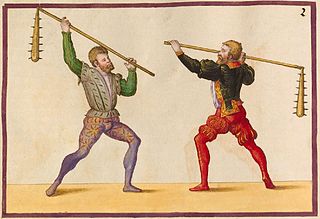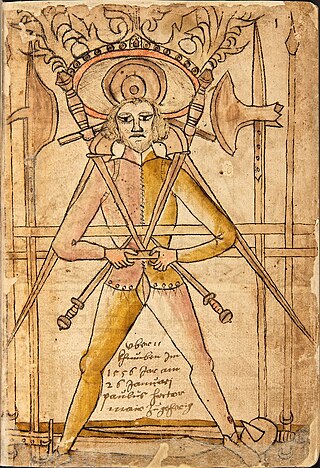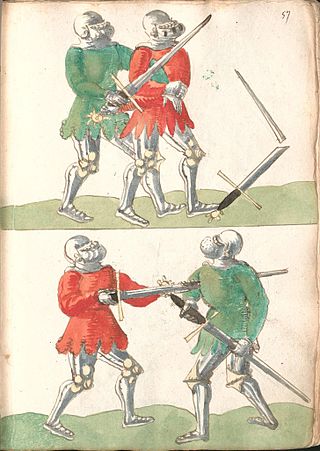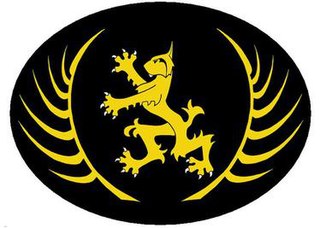
Alcoholics Anonymous (AA) is a global peer-led mutual aid fellowship dedicated to abstinence-based recovery from alcoholism through its spiritually-inclined twelve-step program. Following its twelve traditions, AA is non-professional, non-denominational, apolitical and unaffiliated. In 2020 AA estimated its worldwide membership to be over two million with 75% of those in the U.S.—its country of origin—and Canada.
Twelve-step programs are international mutual aid programs supporting recovery from substance addictions, behavioral addictions and compulsions. Developed in the 1930s, the first twelve-step program, Alcoholics Anonymous (AA), founded by Bill Wilson and Bob Smith, aided its membership to overcome alcoholism. Since that time dozens of other organizations have been derived from AA's approach to address problems as varied as drug addiction, compulsive gambling, sex, and overeating. All twelve-step programs utilize a version of AA's suggested twelve steps first published in the 1939 book Alcoholics Anonymous: The Story of How More Than One Hundred Men Have Recovered from Alcoholism.

A flail is a weapon consisting of a striking head attached to a handle by a flexible rope, strap, or chain. The chief tactical virtue of the flail was its capacity to strike around a defender's shield or parry. Its chief liability was a lack of precision and the difficulty of using it in close combat, or closely-ranked formations.
Langort is a position in the German School of historical fencing. In the Langort position, the point of the sword is extended. The term appears first in Royal Armouries Ms. I.33.

Historical European martial arts (HEMA) are martial arts of European origin, particularly using arts formerly practised, but having since died out or evolved into very different forms.
Martial arts manuals are instructions, with or without illustrations, specifically designed to be learnt from a book. Many books detailing specific techniques of martial arts are often erroneously called manuals but were written as treatises.

Sigmund Schining ein Ringeck was a German fencing master. While the meaning of the surname "Schining" is uncertain, the suffix "ain Ringeck" may indicate that he came from the Rhineland region of south-western Germany. He is named in the text of his treatise as Schirmaister to one Duke Albrecht, Count Palatine of Rhine and Duke of Bavaria. Other than this, the only thing that can be determined about his life is that his renown as a master was sufficient for Paulus Kal to include him on his memorial to the deceased masters of the Society of Liechtenauer in 1470. Ringeck seems to have authored one of the few complete glosses of the epitome of the grand master Johannes Liechtenauer, making him one of the most important German fencing masters of the 15th century.

The spada da lato (Italian) or side-sword is a type of sword popular during the late 16th and early 17th centuries. It is a continuation of the medieval knightly sword, and the immediate predecessor of the rapier of the early modern period. Side-swords were used concurrently with rapiers as well, particularly for military applications. Its use was taught in the Dardi school of Italian fencing, and was influential on the classical rapier fencing of the 17th century. The equivalent Spanish term, espada ropera is the origin of the term rapier. Italian antiquarians use the term spada da lato for rapiers typical of the period of c. 1560–1630, the Italian term for the fully developed rapier of the later 17th century is spada da lato striscia, or just spada striscia "strip-sword".

The Gladiatoria Group is a series of several 15th-century German manuscripts that share the same art style and cover the same material—various types of armored combat. The texts are contemporary with the tradition of Johannes Liechtenauer, but not directly influenced by it. Gladiatoria is thus one of very few glimpses into the characteristics of a potentially independent German martial tradition.

Jörg Wilhalm was an early 16th-century German fencing master, hatmaker, and citizen of Augsburg.

The so-called Codex Wallerstein or Vonn Baumanns Fechtbuch is a 16th-century convolution of three 15th-century fechtbuch manuscripts, with a total of 221 pages.

A pin is a device used for fastening objects or fabrics together and can have three sorts of body: a shaft of a rigid inflexible material meant to be inserted in a slot, groove, or hole ; a shaft connected to a head and ending in a sharp tip meant to pierce one or more pieces of soft materials like cloth or paper ; a single strip of a rigid but flexible material whose length has been folded into parallel prongs in such fashion that the middle length of each curves towards the other so that, when anything is inserted between them, they act as a clamp, or two strips of a rigid material bound together by a spring at one end so that, when the spring held open, one can insert some material between the prongs at the other end that, the spring allowed to close, then clamp the inserted material. According to their function, pins can be made of metals, wood, or plastic.

A Hungarian shield was a specific form of targe. It was rectangular at the bottom, but the upper edge swept upward forming a curve. The elongated upper edge was designed to protect the head and neck against sabre cuts. They were characteristic for the Hungarian light cavalry. During the 16th century, the design became popular across much of eastern Europe, among both Christian and Muslim horsemen.
Jacob Sutor was a German fencing master who published a fighting manual in 1612, called the Neues Künstliches Fechtbuch. The book was mostly an updated version of Joachim Meyer's work.
Peter Falkner was a German fencing master, active in the late 15th century, influenced by Paulus Kal. He is the author of a fechtbuch, now KK 5012, at the Kunsthistorisches Museum, Vienna. He wrote treatises on the usage of longswords, messers, daggers, and on various other weapons of the time period

Anonymous is a decentralized international activist and hacktivist collective and movement primarily known for its various cyberattacks against several governments, government institutions and government agencies, corporations and the Church of Scientology.

The Glasgow Fechtbuch is a combat manual of the German school of fencing, dated to 1505. Consisting of 105 folia, it combines the instructions of various masters of the 15th century who stood in the tradition of Johannes Liechtenauer, presumably based on a previous compilation made by fencing master Sigmund Schining ein Ringeck.
Chivalry Bookshelf was a small press based in the United States founded by Brian R. Price which published booklets and books from 1992 to 2007. It was most notable for its contributions to the Society of Creative Anachronism and the early historical fencing movement and for a dispute about plagiarism and nonpayment of royalties in 2011-12.
William Pearce (1744–1820) was an English clergyman and academic, Master of Jesus College, Cambridge from 1789 and Dean of Ely from 1797.

Schola Gladiatoria (SG) is a historical European martial arts (HEMA) group based in Ealing, west London, Great Britain, founded in 2001 and led by Matt Easton. It provides organized instruction in the serious study and practice of historical European swordplay. Schola seeks to be consistent with the methodology of the ancient European fencing schools by combining scholarship and research into the teachings of the historical masters, with the practical knowledge gained through solo and partnered drilling, and free play (sparring).










